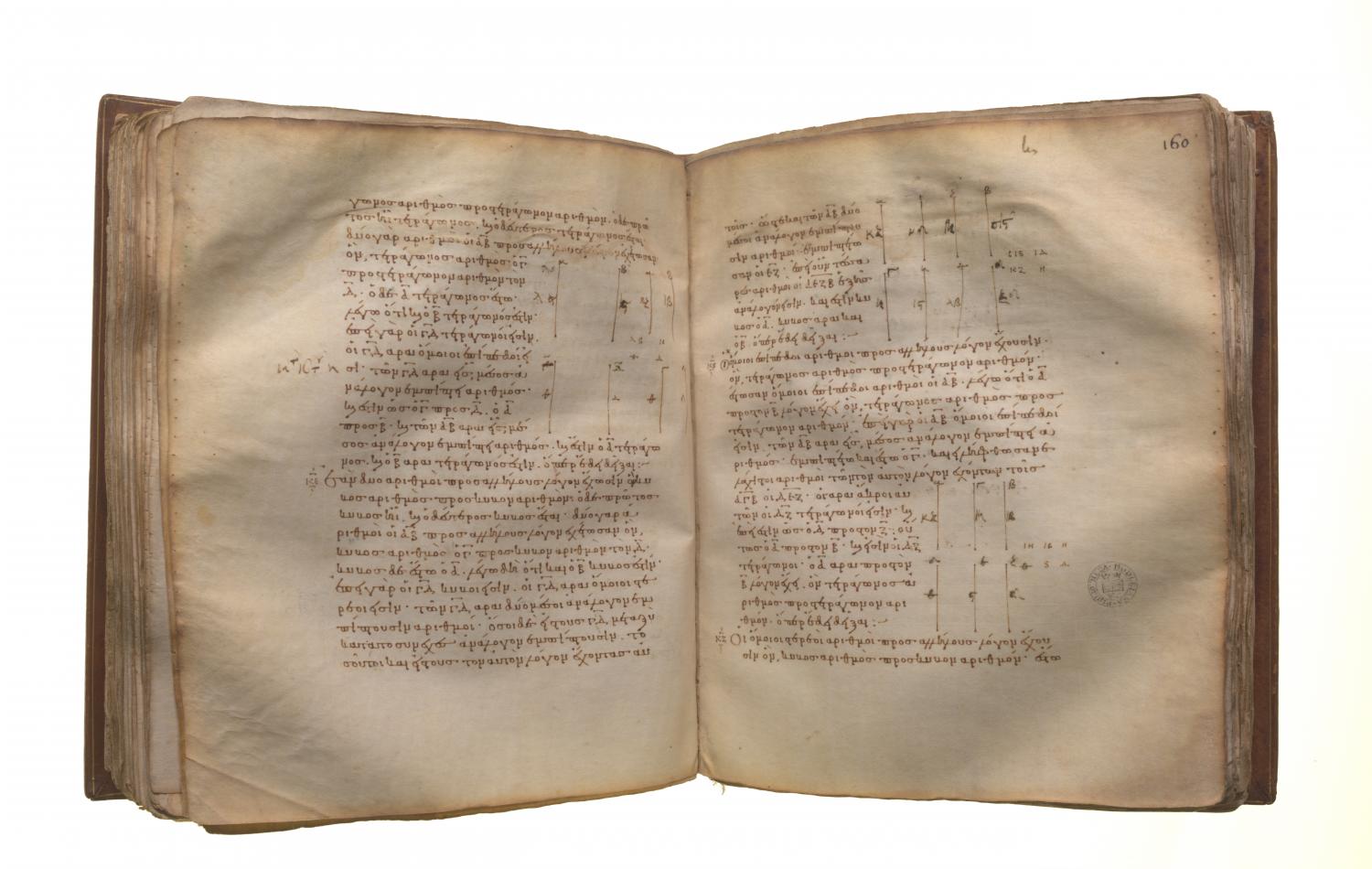Continued proportions in number theory: Book 8 Proposition 24
Translations
Ἐὰν δύο ἀριθμοὶ πρὸς ἀλλήλους λόγον ἔχωσιν, ὃν τετράγωνος ἀριθμὸς πρὸς τετράγωνον ἀριθμόν, ὁ δὲ πρῶτος τετράγωνος ᾖ, καὶ ὁ δεύτερος τετράγωνος ἔσται. Δύο γὰρ ἀριθμοὶ οἱ Α, Β πρὸς ἀλλήλους λόγον ἐχέτωσαν, ὃν τετράγωνος ἀριθμὸς ὁ Γ πρὸς τετράγωνον ἀριθμὸν τὸν Δ, ὁ δὲ Α τετράγωνος ἔστω: λέγω, ὅτι καὶ ὁ Β τετράγωνός ἐστιν. Ἐπεὶ γὰρ οἱ Γ, Δ τετράγωνοί εἰσιν, οἱ Γ, Δ ἄρα ὅμοιοι ἐπίπεδοί εἰσιν. τῶν Γ, Δ ἄρα εἷς μέσος ἀνάλογον ἐμπίπτει ἀριθμός. καί ἐστιν ὡς ὁ Γ πρὸς τὸν Δ, ὁ Α πρὸς τὸν Β: καὶ τῶν Α, Β ἄρα εἷς μέσος ἀνάλογον ἐμπίπτει ἀριθμός. καί ἐστιν ὁ Α τετράγωνος: καὶ ὁ Β ἄρα τετράγωνός ἐστιν: ὅπερ ἔδει δεῖξαι.
If two numbers have to one another the ratio which a square number has to a square number, and the first be square, the second will also be square. For let the two numbers A, B have to one another the ratio which the square number C has to the square number D, and let A be square; I say that B is also square. For, since C, D are square, C, D are similar plane numbers. Therefore one mean proportional number falls between C, D. [VIII. 18] And, as C is to D, so is A to B; therefore one mean proportional number falls between A, B also. [VIII. 8]

